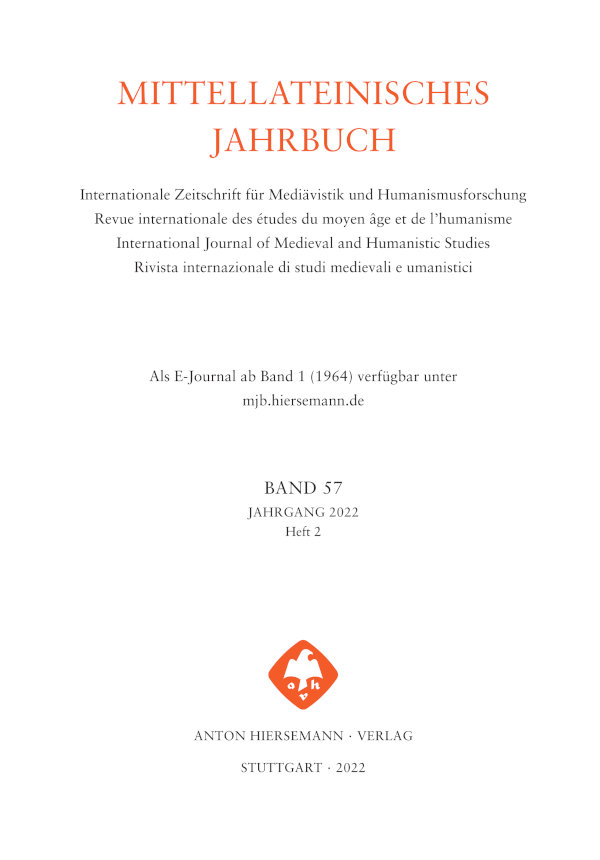Alexandri studia pia sint non uana Die Vita S. Brendani rhythmica ohne Walter von Châtillon
Reihe: Mittellateinisches Jahrbuch
Heft-Nr.: 2
oracio generalis sororis machthildis Reihe: Mittellateinisches Jahrbuch
Heft-Nr.: 2
The metrical prologues to the Visigothic Excerpta Canonum Reihe: Mittellateinisches Jahrbuch
Heft-Nr.: 3
Die Consolatio optima in temptationibus Zu einer Gruppe von Texten gegen Kleinmut und Gewissensskrupel, mit Edition
Reihe: Mittellateinisches Jahrbuch
Heft-Nr.: 3
Das Prosimetrum De precepto Prudentie des Nichasius de Planca (gest. vor 1307) Eine Verteidigung der paganen Poesie im Milieu der Pariser Universität
Reihe: Mittellateinisches Jahrbuch
Heft-Nr.: 3
Drei sapphische Hymnen: ein anonymes Carmen Saphicum de sancto Georgio und Piccolominis De passione und De nativitate domini Eine Verteidigung der paganen Poesie im Milieu der Pariser Universität
Reihe: Mittellateinisches Jahrbuch
Heft-Nr.: 3
Autobiographie und Memorialkultur Der Libellus lamentationis des Jean d’Argilly (Johannes de Argilleo)
Reihe: Mittellateinisches Jahrbuch
Heft-Nr.: 1
La tradición manuscrita de la Anthologia Isidoriana Reihe: Mittellateinisches Jahrbuch
Heft-Nr.: 1
Un Prete Gianni senza India? Un’ipotesi genetica sull’Epistola
Reihe: Mittellateinisches Jahrbuch
Heft-Nr.: 1
Ritual books of magic: A first survey on the tradition of the ›liber sacer‹ (holy book) and the ›liber consecrationis‹ (book of consecration) in medieval sources and early modern manuscripts Reihe: Mittellateinisches Jahrbuch
Heft-Nr.: 2

